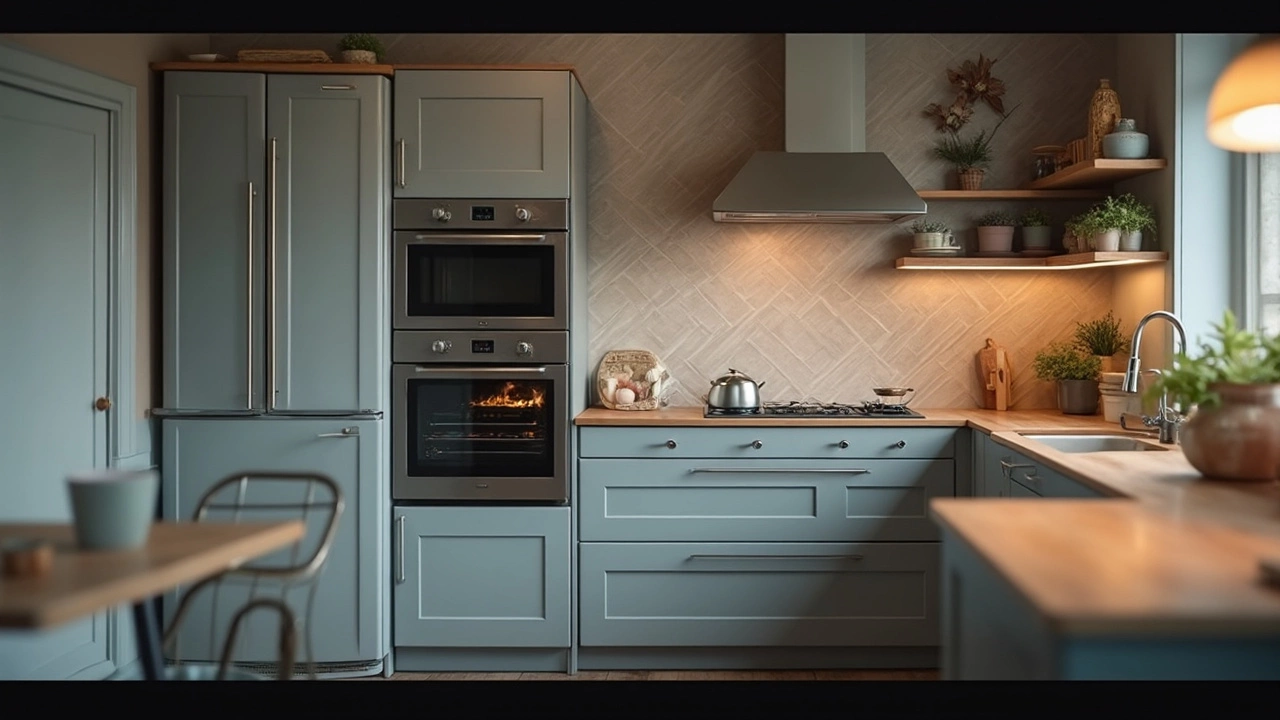Positioning a stove next to a refrigerator is a common kitchen layout question. While it might save space, understanding the practicality, safety, and efficiency aspects is crucial. Factors like heat exchange, appliance longevity, and kitchen workflow should influence the decision. This article dives into the pros and cons and provides actionable tips to help decide if this layout is the best fit for you.
Stove Placement: Practical Tips for a Safe, Easy-to-Use Kitchen
Putting a stove in the right spot can save you headaches later. The right spot keeps you safe, makes cooking flow, and looks good. Below are the basics you need before you start moving appliances.
Safety Clearances and Building Codes
First, check the clearance rules. Most codes require at least 12 inches of space behind a gas stove and 24 inches on each side where cabinets meet the appliances. This gap lets heat escape and stops fire from spreading to woodwork. If you have an electric cooktop, the back clearance can be smaller, but you still want room for the vent and wiring.
Keep the stove at least 18 inches from a wall without a fire‑rating. That distance stops the wall from overheating. If your wall is tiled with a non‑combustible material, you can get a little closer, but it’s safer to keep the 12‑inch rule.
Don’t forget the vent hood. The hood should be centered over the stove and sit 24‑30 inches above the cooking surface for gas, slightly lower for electric. This height pulls smoke away without getting in the way of pots and pans.
Design Tips for a Functional Kitchen
Think about the work triangle – the line between sink, fridge, and stove. Ideally, each leg of the triangle is between 4 and 9 feet. Too long and you waste steps; too short and you crowd the area.
Place the stove near the main prep area but not right next to the fridge door. A small buffer zone lets you grab ingredients without opening the fridge every time you need a spice.
If you’re dealing with a galley kitchen, put the stove on the longer wall and use a pull‑out vent to keep the ceiling line clean. In an open‑plan space, consider a built‑in island stove. Make sure the island has enough clearance on all sides – at least 36 inches – so people can walk around comfortably.
Match the stove’s look with the rest of the kitchen. A sleek glass top works well with modern cabinets, while a stainless‑steel range fits a classic look. Align the backsplash so the stove sits under a clean line; this not only looks neat but also protects the wall from splatters.
Finally, test the layout before you install. Measure the distance from the stove to the nearest cabinet door, the vent, and the floor. Walk through the space with a pot in hand. If it feels cramped or you have to reach over obstacles, adjust the plan.
Getting stove placement right now saves you time, money, and potential safety issues later. Use these simple checks, follow the clearance rules, and think about how you move while cooking. Your kitchen will feel smoother, safer, and more inviting.
